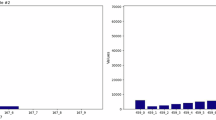Abstract
Minor maintenance actions can affect condition-monitoring measurements, which may in turn affect the accuracy of diagnostic and prognostic techniques used in condition-based maintenance (CBM). Outputs of a CBM model include the calculation of optimal maintenance decisions, conditional reliability, and the calculation of remaining useful life, among other measures. It is necessary to have a model for the manner in which the condition monitoring data changes over time to produce these output measures; many models have been developed to do so. It is also common to record minor maintenance actions carried out on critical assets, with lubricant changes being one of the most common, but it is unusual for models to consider the impact of such maintenance actions that affect the condition monitoring data. In this paper we discuss the impact of minor maintenance on CBM models. A dataset on a collection of gearboxes, consisting of reliability and oil analysis information, including data on oil changes and oil additions, is used to illustrate the benefit of modelling minor maintenance actions.
Similar content being viewed by others

References
Banjevic D., Jardine A. K. S. (2006) Calculation of reliability function and remaining useful life for a Markov failure time process. IMA Journal of Management in Mathematical 17: 115–120
Banjevic D., Jardine A. K. S., Makis V., Ennis M. (2001) A control limit policy and software for condition-based maintenance. Information 39: 32–50
Basawa I. V., Rao P. (1980) Statistical inference for stochastic processes. Academic Press, London
De Sousa, T. (2005). Factoring residual oil into wear rate. Practicing Oil analysis Magazine.
Fitch, J. (2006). The Importance of provenance. Practicing Oil Analysis Magazine.
Jardine A. K. S., Tsang A. (2006) Maintenance, replacement, and reliability: Theory and applications. CRC Press, London
Jardine A. K. S., Lin D., Banjevic D. (2006) A review on machinery diagnostics and prognostics implementing condition-based maintenance. Mechanics Systems and Signal Processing 20: 1483–1510
Lindquist B. H. (2006) On the statistical modeling and analysis of repairable systems. Statistical science 21: 532–551
Lugtigheid D., Banjevic D., Jardine A. K. S. (2004) Modelling repairable system reliability with explanatory variables and maintenance actions. IMA Journal of Management in Mathematical 15: 89–110
Mayer, A. (2007). What to do when your oil analysis results go south. Practicing Oil Analysis Magazine.
Mayer, A. (2005). Understanding time-dependent limits. Practicing Oil Analysis Magazine.
Montgomery, N., Lindquist, T., Garnero, M.-A., Chevalier, R., & Jardine, A. K. S. (2006). Reliability functions and optimal decisions using condition data for EDF primary pumps. 9th International conference on probabilistic methods applied to power systems (PMAPS), Stockholm, Sweden, June 11–15.
Reid N. (2006) Influence function in survival analysis. In: Anderson P. K., Keiding N. (eds) Survival and event history analysis. Wiley, New York, pp 252–254
Reilly, S. (2000). Integrated management of lubrication and lubricant analysis information - Part I - the case for an integrated system. Practicing Oil Analysis Magazine.
Scarf P. A. (1997) A Framework for condition monitoring and condition based maintenance. Quality Technology & Quantitative Management 99: 493–506
Spano, A. (2008). Increasing accuracy in lubrication testing. http://www.reliabilityweb.com, Accessed Feb 18. http://www.reliabilityweb.com/art05/accurate_lube_test.htm.
Sundin, P., Montgomery, N., & Jardine, A. K. S. (2007). Pulp mill on-site implementation of CBM decision support software. International conference of maintenance societies, Melbourne, Australia, May 22–24.
Toms, L. A. (1996). Adaptive trend analysis—A simple solution to data variability. Proceedings of the technology showcase, integrated monitoring, diagnostics, and failure prevention conference, Mobile Alabama, University of Wales, Swansea (pp. 48–53).
Vlok P. J., Coetzee J. L., Banjevic D., Jardine A. K. S., Makis V. (2002) Optimal component replacement decisions using vibration monitoring and the proportional-hazards model. The Journal of the Operational Research Society 53: 193–202
Author information
Authors and Affiliations
Corresponding author
Rights and permissions
About this article
Cite this article
Montgomery, N., Banjevic, D. & Jardine, A.K.S. Minor maintenance actions and their impact on diagnostic and prognostic CBM models. J Intell Manuf 23, 303–311 (2012). https://doi.org/10.1007/s10845-009-0352-0
Received:
Accepted:
Published:
Issue Date:
DOI: https://doi.org/10.1007/s10845-009-0352-0



